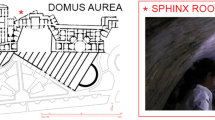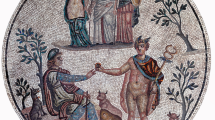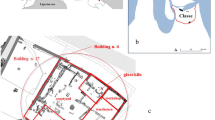Abstract
The production of amber ornaments occurred in Italy during the Eneolithic (E)–Early Bronze Age (EBA), although very few beads from the Italian peninsula have been found and analysed. The number of data available for provenience study of Bronze Age ambers is larger, but still a precise picture of when and to what extent the local sources of amber were exploited is lacking. In the present work, 22 amber finds from six Sicilian sites have been studied and analysed by infrared spectroscopy, in particular with DRIFT (diffuse reflectance infrared Fourier transformed) analyses. The amber samples are dated between the Eneolithic and the Final Bronze Age–Early Iron Age and are from the collections of the P. Orsi Museum, in Syracuse (Sicily). The data show that only simetite was used in South Italy in the Late Eneolithic (LE)–EBA. In the Bronze Age, the exploitation of simetite shows different intensity in different chronological phases. The results are discussed in comparison with the information available for coeval European ambers.







Similar content being viewed by others
References
Albanese Procelli R (1992) La necropoli di Madonna del Piano presso Grammichele: osservazioni sul rituale funerario. Kokalos XXXVIII:33–68
Albanese Procelli RM (1994) Considerazioni sulla necropoli di Madonna del Piano presso Grammichele (Catania). In: La presenza etrusca nella Campania meridionale, Atti giornate di Studio Salerno-Pontecagnano, 1990, Firenze: 153–169
Álvarez-Fernández E, Peñalver E, Declòs X (2005) La presencia de ámbar en los yacimientos prehistóricos (del Paleolítico Superior a la Edad del Bronce) de la Cornisa Cantábrica y sus fuentes de aprovisionamiento. Zephyrus 58:147–170
Anderson KB, Crelling JC (1995) Amber, resinite, and fossil resins. ACS, Washington, DC
Angelini I (2009) Le ambre: caratterizzazione spettroscopica. In: Venturino Gambari M (ed) Il ripostiglio del Monte Cavanero di Chiusa di Pesio (Cuneo), Soprintendenza per i Beni Archeologici del Piemonte e del Museo Antichità Egizie, Comune di Chiusa di Pesio, LineaLab.edizioni, Alessandria: 179–184
Angelini I (2010a) Chapter 3.7.2 “Amber and Resins”. In: Artioli G (ed) Scientific methods and the cultural heritage. University Press, Oxford, pp. 367–384
Angelini I (2010b) Indagini archeometriche degli ornamenti in ambra provenienti dalla necropoli di Narde. In: La fragilità dell’Urna. I recenti scavi a Narde, Necropoli di Frattesina (XII-IX sec. a.C.), Soprintendenza per i Beni Archeologici del Veneto, Comune di Fratta Polesine: 135–145
Angelini I (2012) Ambre protostoriche della Sardegna: indagini archeometriche. In Proc. XLIV Riunione Scientifica dell’Istituto Italiano di Preistoria e Protostoria “La preistoria e la protostoria della Sardegna”. Cagliari, Barumini, Sassari, 23–28 Novembre 2009, IIPP, Firenze: 1151–1161
Angelini I (2013) Le ambre dalla tomba 347 della necropoli di Desmontà, In: L. Salzani (ed) La necropoli di Desmontà (Veronella – Albaredo d’Adige. Verona) Scavi 1982–2011, Documenti di Archeologia 56, SAP Società Archeologica srl, Tecnografica Rossi, Sandrigo (VI): 203–211. ISBN: 9788887115901
Angelini I, Bellintani P (2005) Archaeological ambers from Northern Italy: an FTIR-DRIFT study of provenance by comparison with the geological amber database. Archaeometry 47(2):441–454
Angelini I and Bellintani P (2006) L’archeometria delle ambre protostoriche: dati acquisiti e problemi aperti. In: Materie prime e scambi nella protostoria Italiana, Atti IIPP XXXIX, III: 1477–1494
Artioli G, Angelini I (2011) Mineralogy and archaeometry: fatal attraction. Eur J Mineral 23:849–855
Beck CW (1971) Amber from Eneolithic Necropolis of Laterza, Origini, 5: 301–305
Beck CW (1982) Authentication and conservation of amber: conflict of interests. Stud Conserv 27(1):104–107
Beck CW (1986) Spectroscopic investigations of amber. Applied Spectroscopy Review 22:57–200
Beck CW, Hartnett HE (1993) Sicilian amber. In Proceedings of the Second Conference on Amber in Archaeology, Liblice, 1990: 36–47
Beck CW, Wilbur E, Meret S (1964) Infrared spectra and the origin of amber. Nature 201:256–257
Beck CW, Wilbur E, Meret S, Kossove D, Kermani K (1965) The infrared spectra of amber and the identification of Baltic amber. Archaeometry 8:96–109
Bellintani P (2015) Baltic amber, alpine copper and glass beads from the Po Plain. Amber trade at the time of Campestrin and Frattesina. Padusa 50(2014):111–140
Bellintani P, Angelini I, Artioli G (2011) L’origine delle ambre di Poggiomarino. Dati preliminari e obiettivi della ricerca archeometrica. In: C. Ciccirelli and C. Albore Levadie (eds) L’abitato protostorico di Poggiomarino. Loc. Longola. Campagne di Scavo 2000–2004, Studi della Soprintendenza Archeologica di Pompei 32, L’Erma di Bretschneider, Roma, Cap. IV: 164–166
Bellintani P, Salzani L, de Zuccato G, Leis M, Vaccaro C, Angelini I, Soffritti C, Bertolini M, Thun Hohenstein U (2015) L’ambra dell’insediamento della tarda Età del bronzo di Campestrin di Grignano Polesine (Rovigo). In Atti XLVIII riunione scientifica dell’Istituto Italiano di Preistoria e Protostoria, Padova, 5–9 Novembre 2013, Studi di Preistoria e Protostoria 2, Preistoria e Protostoria del Veneto: 419–426
Bernabò Brea M and Miari M (2013) Oltre il Grande Fiume. Le necropoli dell’età del Rame dell’Emilia Romagna. In: DeMarinis RC (ed) L’età del Rame. La Pianura Padana e le Alpi al tempo di Oetzi, catalogo della mostra – Brescia: 353–374
Biancofiore F (1967) La necropoli eneolitica di Laterza, Origini I: 195–312
Bietti Sestieri AM (1979) I processi storici nella Sicilia orientale tra la tarda età del Bronzo e l’inizio dell’età del Ferro sulla base dei dati archeologici. In Atti della XXI Riunione Scientifica, Il Bronzo finale in Italian memoria di Ferrante Rittatore Von Willer (Firenze 1977): 599–629
Burdukiewicz MJ (1993) Late Palaeolithic amber in Northern Europe. In: Proceedings of the Second Conference on Amber in Archaeology, Liblice, 1990: 141–146
Cappellini G (1872) Überdas Vorkommen von Bernstein im Bolognesischen und anderen Punkten Italiens, Zeitschrift für Ethnologie. Verhandlungen: 198
Cronyn JM (1990) Elements of archaeological conservation. Routledge, London (UK)
Cultraro M (2006) I vaghi d’ambra del tipo Tirinto nella protostoria italiana. In Atti XXXIX Riunione Scientifica I.I.P.P., III: 1533–1553
Cultraro M (2007) Evidence of amber in Bronze Age Sicily: local sources and the balkan—between the Aegean and the Baltic Seas. Prehistory across borders. In Proceedings of the international conference, Zagreb 11–14 April 2005:377–390
Cultraro M (2010) Archeometria delle ambre nella Sicilia pre e protostorica: il progetto INDAS. In: D’Andria F, Malfitana D, Masini N, Scardozzi G (eds), Il dialogo dei saperi.Metodologie integrate per i Beni Culturali, Tomo 1, Napoli:383–392
Dal Corso J, Roghi G, Ragazzi E, Angelini I, Giaretta A, Soriano C, Delclòs X, Jenkyns HC (2013) Physico-chemical analysis of Albian (lower cretaceous) amber from San Just (Spain): implications for palaeoenvironmental and palaeoecological studies. Geol Acta 11(3):359–370. doi:10.1344/105.000001871
Dalrio G (1980) Mineralogia del Bolognese. Descrizione e itinerari, Cacciari, Bologna
de Navarro JM (1925) Prehistoric routes between northern Europe and Italy defined by the amber trade. Geogr J 66(6):481–503
Domínguez-Bella S, Bóveda Fernández MJ (2011) Variscita y ámbar en el Neolítico Gallego. Análisis arqueométrico del collar del túmulo I de Chousa Nova, Silleda (Galicia). Trab Prehist 68(2):369–380
Domínguez-Bella S, Álvarez Rodríguez MA, Ramos Muñoz J (2001) Estudio analítico de las cuentas de collar de ámbar del Dolmen de Alberite (Villamartín, Cádiz). Naturaleza química y mineralógica e implicaciones sobre su origen. In: B. Gómez Tubío, M.A. Respaldiza & M.L. Pardo Rodríguez eds. III Congreso Nacional de Arqueometría. sevilla, Universidad de Sevilla: 621–30
Favre-Quattropania L, Groeninga P, Ramseyerb D, Schlapbacha L (2000) The protection of metallic archaeological objects using plasma polymer coatings. Surf Coat Technol 125:377–382
Gennusa R (2015) L’evoluzione millenaria di uno stile. La civiltà del Bronzo castellucciana nella Sicilia meridionale, All’insegna del Giglio, Firenze
Ghiurca V, Vavra N (1990) Occurrence and chemical characterization of fossil resin from Colţi (District of Bazu, Romania). Jb. Geol. Paläont. Mh., H5: 283–294
Giannola P, Ragazzi E, Roghi G (1998) Upper Triassic amber from the Dolomites (northern Italy). A paleoclimatic indicator? Riv Ital Paleontol Stratigr 104:381–390
Grimaldi DA (1996) Amber: window to the past. Harry N. Abrams Inc., New York
Guerreschi G (1999) Il pane d’ambra della t.206: determinazione della provenienza mediante analisispettrofotometrica in I.R. In: Pacciarelli M (ed) Torre Galli. La necropoli della prima età del ferro (scavi Paolo Orsi 1922-23). Rubbettino, Soveria Mannelli (CZ), p. 219
Guiliano M, Mille G, Onoratini G, Simon P (2006) Presence of amber in the upper cretaceous (Santonian) of La ‘Mède’ (Martigues, southeastern France). IRTF characterization. Comptes Rendus Palevol 5:851–858
Harding AF, Hughes-Brock E, Beck C (1974) Amber in Mycenaean world. The Annual of the British School at Athens 69:145–172
Helm O (1881) Über sicilianischen und rümanischen Bernstein. Schriften der naturforschenden Gesellschafts in Danzig 5: 293–296
Helm O, Conwentz H (1886) Sull’ambra di Sicilia. Malpighia 1:49–56
Johnson JS (1994) Consolidation of archaeological bone: a conservation perspective. Journal of Field Archaeology 21(2):221–233
Jossang J, Bel-Kassaoui H, Jossang A, Seuleiman M, Nel A (2008) Quesnoin, a novel Pentacyclic ent-Diterpene from 55 million years old Oise amber. J Org Chem 73:412–417
Kohring R, Schlütter T (1989) Historische und paläontologische Bestandsaufnahme des Simetits, eines fossilen Harzes mutmaßlich mio/pliozänen Alters aus Sizilien. Documenta naturae 56: 33–58.
Kosmowska-Ceranowicz B (1984) Amber in sediment. “Amber in Nature”, Wydawnictwa Geologiczne, Warsaw:37–48
Kosmowska-Ceranowicz B (1997) Amber, treasure of the ancient sea. Muzei Ziemi, Warsaw
Kosmowska-Ceranowicz B (1999) Succinite and some other fossil resins in Poland and Europe (deposits, finds, features and differences in IRS). In: Estudios del Museo de Ciencias Naturales de Alava 14 (Nùm. Espec. 2): 73–117
Kosmowska-Ceranowicz B (2006) Poland. The story of amber. Oficyna Wydawnicza Sadyba, Warsaw
Lambert JB, Tsai CYH, Shah MC, Hurtley AE, Santiago-Blay JA (2012) Distinguishing amber and copal classes by proton magnetic resonance spectroscopy. Archaeometry 54:332–348
Larsson SG (1978) Baltic amber—a Palaeobiological study. Scandinavian Science Press, Klampenborg, Denmark
Lukashina NP, Kharin GS (1999) Criteria for the recognition of the Prussian suite (formation) and Prussian horizon. In: Kosmowska-Ceranowicz B, Paner H (eds) Investigation into amber, Gdansk, 2–6 September, 1997. Polish Academy of Science, Gdansk, pp. 27–35
Martinelli MC, Procelli E, Pacciarelli M, Cavalier M (2012) L’età del Bronzo antica e media nella Sicilia orientale e nella zona dello Stretto di Messina. In: Atti XLI riunione scientifica I.I.P.P: 156–184
Miari M (2007) L’ambra in area terramaricola. In: Nava M.L. Salerno A., edd, 2007, Ambre. Trasparenze dell’antico cat. Mostra Napoli 26.03–10.09.2007, Electa ed: 68–72
Murillo-Barroso M, Martinón-Torres M (2012) Amber sources and trade in the prehistory of the Iberian peninsula. Eur J Archaeol 15(2):187–216
Néraudeau D, Manem S, Delclòs X, Girard V (2011) L’ambre crétacé des Charentes, une alternative à l’ambre balte. In: Marchand, G., Querré, G., (eds.) Roches et Sociétés de la Préhistoire, Rennes : 265–271
Orsi P (1891) La necropoli sicula del Plemmirio (Siracusa). BPI: 115–139
Orsi P (1895) Thapsos. Necropoli sicula. In: Monumenti Antichi Lincei VI
Orsi P (1899) Siracusa. Nuove esplorazioni nel Plemmyrium, Notizie degli Scavi: 26–42
Orsi P (1907) Necropoli e stazioni sicule di transizione. VI. La Grotta di Calafarina preso Pachino, abitazione e sepolcro. BPI: 7–22
Pastorelli G, Shashoua Y, Richter J (2013) Hydrolysis of Baltic amber during thermal ageing—an infrared spectroscopic approach. Spectrochim Acta A Mol Biomol Spectrosc 106:124–128
Peñalver E, Álvarez-Fernández E, Arias P, Delclòs X, Ontañón R (2007) Local amber in a Paleolithic context in Cantabrian Spain: the case of La Garma A. J Archaeol Sci 34:843–849
Poinar GO Jr (1992) Life in amber. Stanford University Press, Stanford, California
Ragazzi E, Fedele P, Gianolla P, Roghi G (2003) L’ambra Triassica delle Dolomiti. Rivista Mineralogica Italiana 1:21–22
Rice PC (2006) Amber the golden gem of the ages, 4th edn. Authorhouse, Bloomington, Indiana
Roghi G, Ragazzi E, Gianolla P (2006) Triassic amber of the southern alps (Italy). Polaris 21(2):143–154
Selwitz C (1988) Cellulose nitrate in conservation. Research in Conservation 2. The Getty Conservation, Institute Marina del Key, California, USA
Skalski AW, Veggiani A (1990) Fossil resin in Sicily and in the northern Apennines: geology and organic content. Pr Muz Ziemi 41:37–49
Stout EC, Beck CW, Kosmowska-Ceranowicz B (1995) Gedanite and Gedano-succinite. In Amber, Resinite, and Fossil Resins, Anderson & Crelling, Washington DC: 130–14
Tapparo A, Artioli G, Angelini I, Favaro G (2011) The mystery of the discolored flints. New molecules turn prehistoric lithic artefacts blue. Analitycal and Bioanalitical Chemistry 399:2389–2393
Teodor ES, Teodor ED, Vîrgolici M, Manea MM, Truica G, Litescu SC (2010) Non-destructive analysis of amber artefacts from prehistoric Cioclovina hoard. J Archaeol Sci 37:2386–2396 ISSN: 0305-4403
Thickett D, Cruickshank P, Ward C (1995) The conservation of amber. Stud Conserv 40(4):217–226
Trevisani E, Papazzoni CA, Ragazzi E, Roghi G (2005) Early Eocene amber from the “Pesciara di Bolca” (Lessini Mountains, Northern Italy). Palaeo 223:260–274
Valaczkai T., Ghiurca V. 1997, Amber from Romania, Sonderheft Metalla: 63–66
van der Werf ID, Fico D, De Benedetto GE, Sabbatini L (2016) The molecular composition of Sicilian amber. Microchem J 125:85–96
Vavra N (1993) Chemical characterization of fossil resins (“amber”)—a critical review of methods, problems and possibilities: determination of mineral species, botanical sources and geographical attribution. Proceeding of a Symposium held in Neukirchen am Grobvenediger (Salzburg/Austria), September 1990, Volker Höck – Friedrich Koller editors: 147–157
Acknowledgments
The Paolo Orsi Museum is acknowledged for the permission to study the materials; Angela M. Manenti and Concetta Ciurcina (who was the director of the Museum when the sampling was performed) are thanked for their kind help. The Soprindendenza per I Beni Archeologici of the Sicilia region is thanked for the permission to study and sample the amber finds. The research was supported by funding of the I.I.P.P. (Italian Institute of Prehistory and Protohistory). Prof. A. Pavese (University of Milan) kindly made the infrared instrumentation available for the measurements.
Author information
Authors and Affiliations
Corresponding author
Rights and permissions
About this article
Cite this article
Angelini, I., Bellintani, P. The use of different amber sources in Italy during the Bronze Age: new archaeometric data. Archaeol Anthropol Sci 9, 673–684 (2017). https://doi.org/10.1007/s12520-016-0452-7
Received:
Accepted:
Published:
Issue Date:
DOI: https://doi.org/10.1007/s12520-016-0452-7




